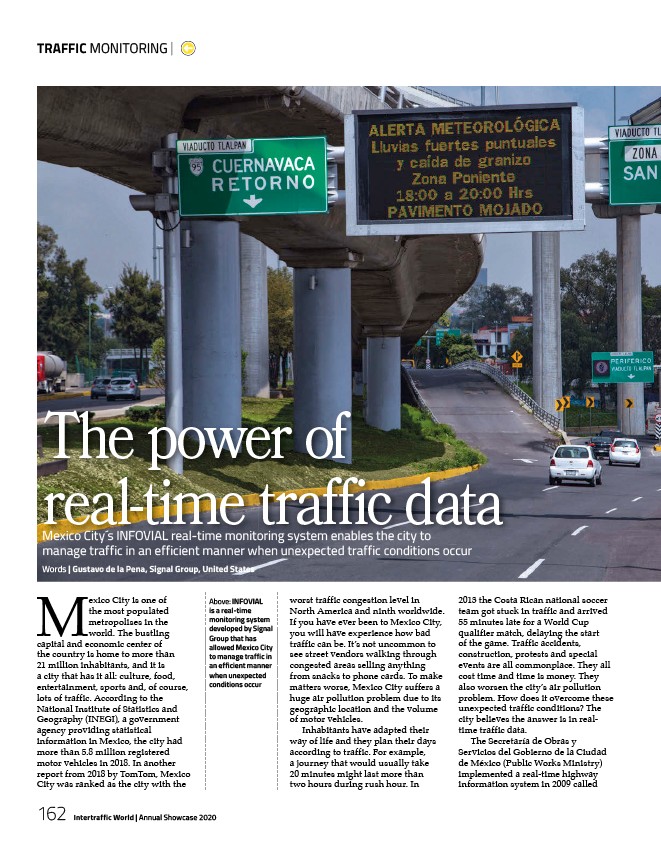
TRAFFIC MONITORING |
The power of
real-time traffic data
Mexico City´s INFOVIAL real-time monitoring system enables the city to
manage traffic in an efficient manner when unexpected traffic conditions occur
Words | Gustavo de la Pena, Signal Group, United States
Above: INFOVIAL
is a real-time
monitoring system
developed by Signal
Group that has
allowed Mexico City
to manage traffic in
an efficient manner
when unexpected
conditions occur
Mexico City is one of
the most populated
metropolises in the
world. The bustling
capital and economic center of
the country is home to more than
21 million inhabitants, and it is
a city that has it all: culture, food,
entertainment, sports and, of course,
lots of traffic. According to the
National Institute of Statistics and
Geography (INEGI), a government
agency providing statistical
information in Mexico, the city had
more than 5.8 million registered
motor vehicles in 2018. In another
report from 2018 by TomTom, Mexico
City was ranked as the city with the
162 Intertraffic World | Annual Showcase 2020
worst traffic congestion level in
North America and ninth worldwide.
If you have ever been to Mexico City,
you will have experience how bad
traffic can be. It’s not uncommon to
see street vendors walking through
congested areas selling anything
from snacks to phone cards. To make
matters worse, Mexico City suffers a
huge air pollution problem due to its
geographic location and the volume
of motor vehicles.
Inhabitants have adapted their
way of life and they plan their days
according to traffic. For example,
a journey that would usually take
20 minutes might last more than
two hours during rush hour. In
2013 the Costa Rican national soccer
team got stuck in traffic and arrived
55 minutes late for a World Cup
qualifier match, delaying the start
of the game. Traffic accidents,
construction, protests and special
events are all commonplace. They all
cost time and time is money. They
also worsen the city’s air pollution
problem. How does it overcome these
unexpected traffic conditions? The
city believes the answer is in realtime
traffic data.
The Secretaría de Obras y
Servicios del Gobierno de la Ciudad
de México (Public Works Ministry)
implemented a real-time highway
information system in 2009 called